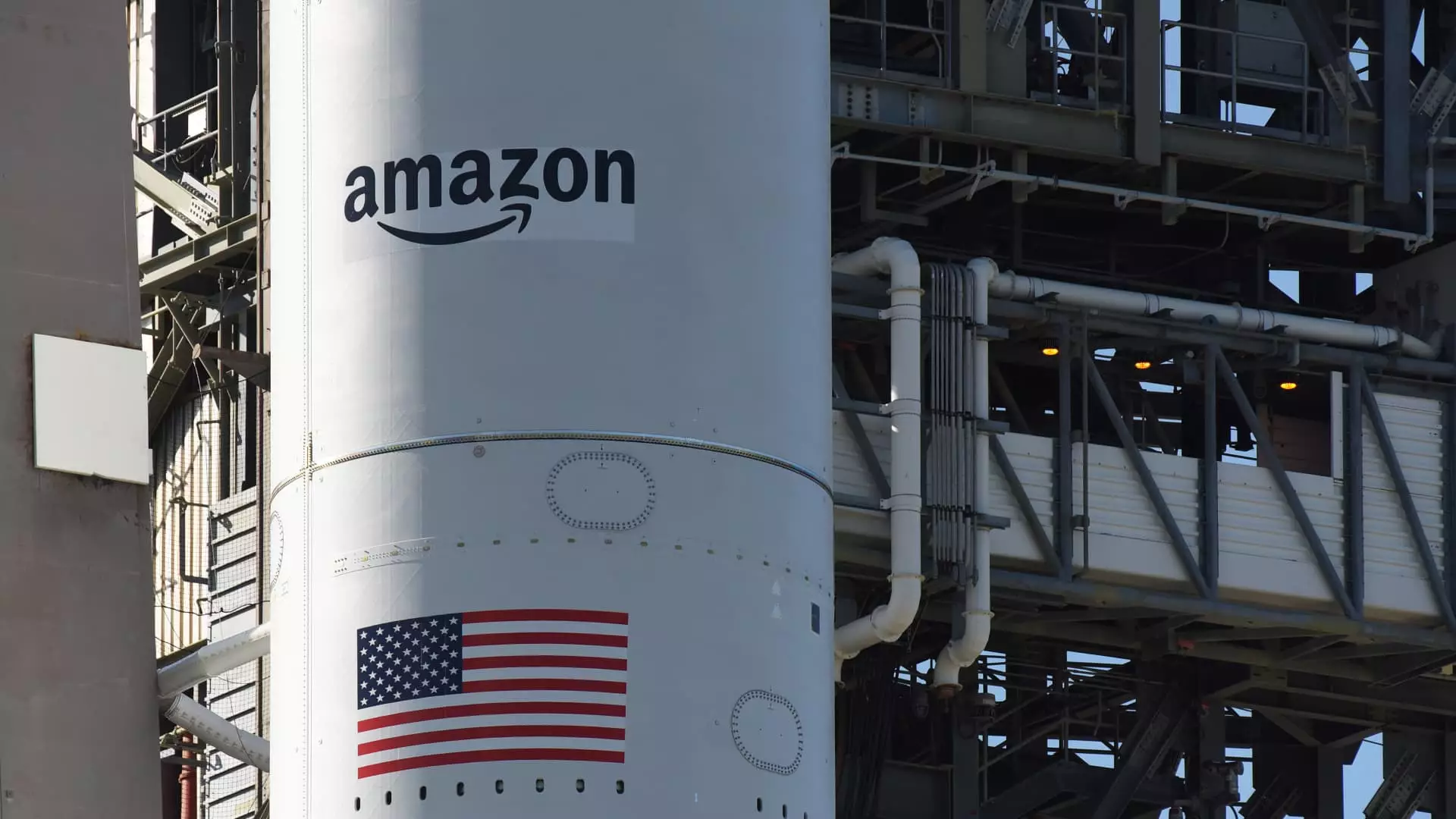Amazon’s journey to launch its Kuiper internet satellites took an unexpected detour due to adverse weather conditions on a recent Wednesday night. Initially set to lift off from Cape Canaveral, Florida, the United Launch Alliance (ULA) found itself in a predicament as “stubborn cumulus clouds” and high winds compromised the launch window. The frustrating situation served as a stark reminder of how external factors can impact even the most advanced technological endeavors. ULA’s announcement of the delay, which highlighted the inability to proceed due to a “NO GO” forecast, brings to light the unpredictability that accompanies space missions.
Competing in a Tightening Market
Amazon’s Kuiper project stands at a critical juncture, competing against the well-established dominance of SpaceX’s Starlink, which boasts an impressive 8,000 satellites already in orbit. This fierce rivalry puts immense pressure on Amazon to not only launch its satellites but to establish a tangible presence in the internet service market. Starlink has set a high bar for latency and speed, and Amazon’s success will largely hinge on its ability to meet and exceed these expectations.
The goal of delivering high-speed, low-latency internet through square-shaped terminals to consumers, businesses, and governments across the globe poses an ambitious challenge. Commercial services are projected to go live later this year, but anticipation consistently melds with skepticism regarding whether Amazon can truly compete against the aggressive expansion of Starlink.
Governmental Ties and Regulatory Pressure
The framework of governmental regulations adds another layer of complexity to Amazon’s mission. With a ticking clock imposed by the Federal Communications Commission (FCC), Amazon is required to have 1,618 of its 3,236 satellites deployed by July 2026. This deadline looms large as the company scrambles to navigate the intricate regulatory landscape while simultaneously pushing forward with production and deployment strategies.
The involvement of prominent figures in the tech industry, such as Elon Musk, who now plays a prominent role in governmental affairs, further complicates the competitive environment for Amazon. This relationship not only amplifies Starlink’s influence but also raises the stakes for Amazon, urging it to act swiftly and strategically to carve out its share of the market.
Strategic Production and Rapid Deployment
Despite the challenges it faces, Amazon is actively working on preparing more satellites for future launches. The company is keenly aware that once it achieves the first successful launch, it anticipates an uptick in production and deployment rates. Fulfilling the FCC’s requirements is more than just meeting a regulatory deadline; it’s a matter of establishing credibility and validating its commitment to the ambitious vision of providing global internet access.
As Amazon enters this high-stakes race with its Kuiper project, the corporation must remain agile, leveraging its resources and innovative spirit to ensure it emerges as a credible competitor in the burgeoning satellite internet market. Whether it can overcome the natural hurdles posed by the weather, government regulations, and established rivals remains to be seen, but one thing is clear: Amazon’s endeavor to revolutionize internet access is igniting excitement, scrutiny, and the promise of connectivity for millions worldwide.

